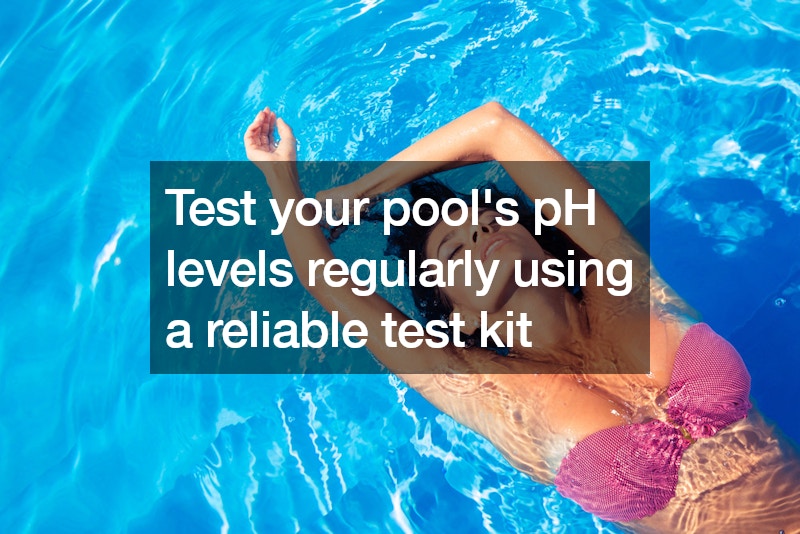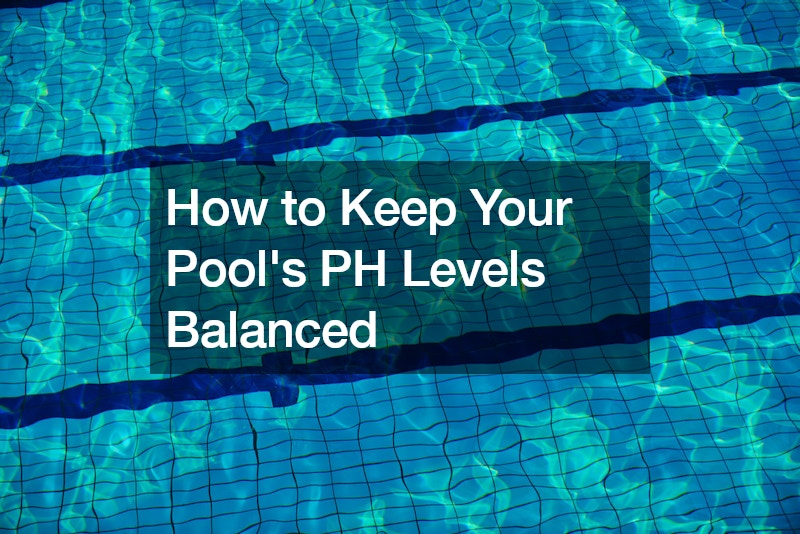Maintaining balanced pH levels in your pool is crucial for ensuring the water remains safe, clear, and comfortable for swimmers. The pH level measures how acidic or basic the water is, with a scale ranging from 0 to 14. The ideal pH range for pool water is between 7.2 and 7.6. Here are some essential tips to help you keep your pool’s pH levels balanced.
Our first pool maintenance pH tip is to test your pool’s pH levels regularly using a reliable test kit or digital meter. Testing should be done at least twice a week, especially during heavy pool usage or after a rainstorm, as these factors can affect pH levels.
If the pH level is too high (above 7.6), the water becomes too alkaline, leading to cloudy water, scaling, and reduced chlorine effectiveness. To lower the pH, add a pH decreaser (sodium bisulfate or muriatic acid) according to the manufacturer’s instructions. Always add chemicals gradually and retest the water after allowing it to circulate for several hours.

An equally valuable pool maintenance PH tip is to check if the pH level is too low (below 7.2), the water becomes too acidic, causing corrosion of pool surfaces and equipment, skin and eye irritation, and rapid chlorine consumption. To raise the pH, use a pH increaser (sodium carbonate or baking soda). Add the increaser slowly, and retest the water after thorough circulation.

